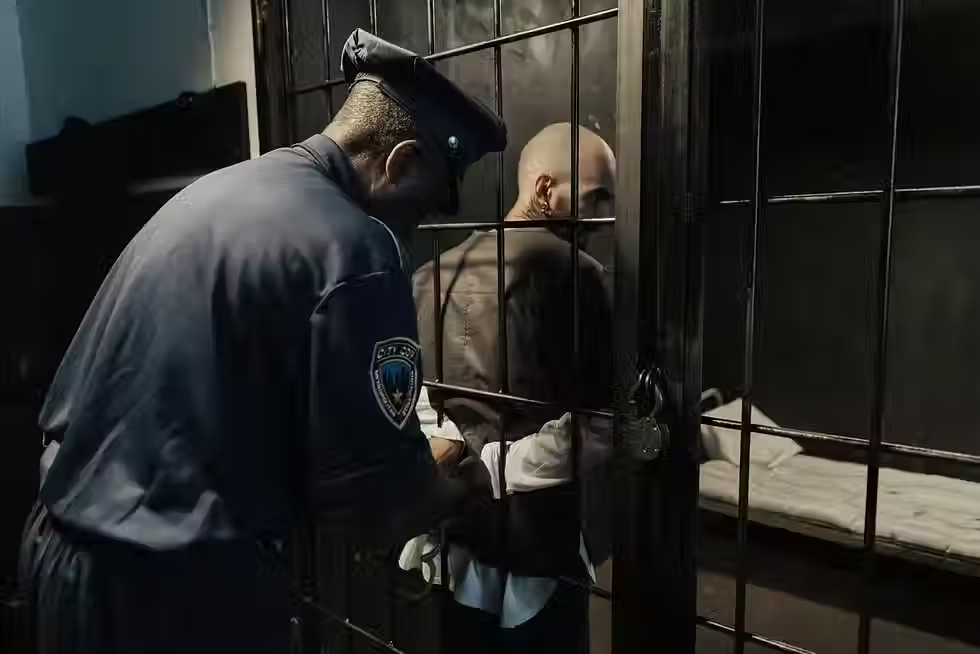What Is Secondary Trauma?
- Dec 16, 2020
- 11 min read
Updated: 6 days ago

The lingering shadows of trauma don't just affect survivors; they stretch out to touch the lives of those who listen and care. If you've ever felt emotionally drained or unsettled after hearing someone's painful story, you're experiencing a recognized phenomenon. We'll break down what secondary trauma is, explain why it impacts caregivers and loved ones so intensely, and provide actionable ways to protect your own well-being.
What is the defining characteristic of secondary trauma?
Secondary trauma, also known as secondary traumatic stress (STS), is a traumatic experience that occurs when a person is exposed to the details of a traumatic event through a secondary source, such as listening to detailed accounts from a survivor or viewing graphic images or news coverage of the event.
It's clear that secondary trauma is a complex psychological condition, but we're just scratching the surface of who's truly at risk and how it silently differs from vicarious trauma. Keep reading to learn the specific, often hidden symptoms of STS and discover effective strategies professionals and family members can use to manage this unique form of traumatic stress.
Table of Contents
Defining Secondary Trauma: The Indirect Experience of Pain
Who Is at Risk? Understanding Susceptibility
The Role of Empathy and Support Systems
High-Risk Occupations: First Responders, Counselors, and More
The Key Difference: Secondary Trauma vs. Vicarious Trauma
The Onset and Scope of Secondary Traumatic Stress
The Signs: Symptoms of Secondary Trauma
Emotional and Psychological Toll
Physical and Behavioral Changes
Altered Worldview and Hopelessness
Practical Steps for Overcoming and Managing Secondary Traumatic Stress
Establishing Clear Work-Life Boundaries
The Power of Physical Activity and Social Connection
Self-Awareness and Proactive Prevention
Frequently Ask Questions
Defining Secondary Trauma: The Indirect Experience of Pain

Secondary trauma is a traumatic experience that occurs when a person is exposed to traumatic events through another source. This is an indirect experience of or exposure to a traumatic event. It results from listening to detailed accounts, viewing graphic images, or witnessing or being exposed to difficult situations like domestic violence, natural disasters, a near-death experience, or combat.
While the information above provides a good overview, there’s much more to learn about the complexities of secondary trauma, including who is most at risk and how it differs from vicarious trauma. Secondary trauma is a way for the effects of trauma to reach even more people. It comes as a result of a person who experienced trauma sharing their stories in detail, or even by a person viewing graphic material from the scene of a traumatic event.
This condition is an indirect trauma. It involves absorbing the stress and pain from another person's original traumatic experience. This can be a counselor hearing about detailed and painful descriptions of abuse or neglect, viewing graphic photographs from a violent crime scene, or simply watching the news covering natural disasters or armed conflicts. Those viewing or listening to these accounts may have their own visceral reaction to the effects of this trauma. They can even develop traumatic symptoms as a result of the detailed descriptions, vivid imagery, or photographs related to a specific traumatic event.
Secondary traumatic feelings can become intense enough to cause a traumatic response in people, even if they are experiencing this trauma second-hand. This is often referred to as secondary traumatic stress (STS). It is a serious mental health concern. Dealing with secondary traumatic stress may require a person to seek professional help or make daily adjustments to their lives to cope with the effects.
Who Is at Risk? Understanding Susceptibility
Secondary trauma can affect anyone who is involved with a person who has experienced a traumatic event in their lives. However, certain groups face a significantly higher risk of developing secondary traumatic stress due to the nature of their work or personal disposition.
The Role of Empathy and Support Systems
People who are naturally empathetic towards others are often at an increased risk of secondary trauma. This is particularly true when they establish themselves as a support system for friends, family, or peers recovering from events like assault, death, or terminal illness.
The emotional investment they put into supporting a trauma survivor makes them highly susceptible to absorbing the distress. These same individuals can often be at risk of compassion fatigue. This is a combination of exhaustion, reduced ability to empathize, and a deep sense of hopelessness that comes from continuous exposure to trauma and suffering.
High-Risk Occupations: First Responders, Counselors, and More
Particular occupations have a high risk of exposure to secondary trauma. These roles consistently involve listening to or witnessing traumatic events indirectly.
Counselors and Therapists: They frequently hear detailed, painful descriptions of experiences like abuse or neglect. Their job requires deep engagement with the client's emotional state, increasing the risk of STS.
Child-Care Professionals: They interact with children who have experienced trauma, often hearing stories that are difficult to process.
Social Workers: In social work, professionals are often immersed in environments dealing with domestic violence, abuse, and profound psychological trauma. What is secondary trauma in social work is a critical topic in professional training. They manage complex cases that involve continuous exposure to human suffering.
Medical Professionals (e.g., Nurses): They treat victims of severe accidents, violence, or illness. What is secondary trauma in nursing is a recognized concern. They deal with the emotional aftermath for both the patients and their families.
First Responders: Police officers, paramedics, and firefighters are in a difficult situation. They are involved both in experiencing traumatic situations firsthand and in working with people who have experienced traumatic events. They have to hear detailed accounts to gather evidence or determine how to best solve a situation.
As a person gleans more information from others involved in trauma, they can put themselves at an increased risk for developing secondary trauma. The impact of indirect exposure to traumatic experiences accumulates over time. This makes understanding how to manage secondary traumatic stress essential for long-term career sustainability in these fields.

The Key Difference: Secondary Trauma vs. Vicarious Trauma
The terms secondary trauma and vicarious trauma are often used interchangeably. However, there are some key differences between the two circumstances. Both are forms of traumatic stress resulting from indirect exposure.
Vicarious trauma is often caused by continuous and repeated exposure to traumatic events over an extended period of time. It involves a fundamental and gradual transformation of a person's inner experience, often altering their worldview, beliefs about self and others, and emotional well-being. The effects of vicarious trauma can set in slowly.
Secondary trauma (or secondary traumatic stress), on the other hand, can set in quickly. It can be tied to a singular, intensely emotional traumatic event or multiple events, depending on the kinds of exposure and how a person reacted to experiencing them second-hand. It is best defined as a condition comprising trauma-related symptoms that result from this exposure.
The sudden onset of this secondary trauma can cause several complications. It can even develop into its own psychiatric disorder, which can be akin to Post-Traumatic Stress Disorder (PTSD), or what is sometimes called secondary PTSD.
Feature | Secondary Trauma (STS) | Vicarious Trauma (VT) |
Onset | Sudden, acute, and event-specific. | Gradual, cumulative, and long-term. |
Exposure | Often tied to a specific, vivid story or image. | Continuous, repeated exposure to various clients/cases. |
Effect | Symptoms are similar to PTSD (secondary ptsd symptoms). | Alteration of core beliefs and worldview. |
Nature | A form of traumatic stress. | A transformation of the self over time. |
The Signs: Symptoms of Secondary Trauma
Secondary trauma can affect a person in a number of different ways. Recognizing the symptoms of secondary trauma is the first step toward effective coping. These symptoms are a direct result of being constantly on high alert, absorbing the emotional weight of another's suffering.
Emotional and Psychological Toll
Emotional turmoil can manifest as a part of a person’s daily life. These shifts in mood and outlook are common signs:
Increased Irritability: Small annoyances can lead to disproportionate frustration.
Sadness and Emotional Numbness: A pervasive sense of sadness or an inability to feel joy.
Anxiety and Fear: An increase in general anxiety, often related to the types of traumatic events they hear about.
Intrusive Thoughts: Finding oneself unable to focus on tasks or responsibilities at hand. This can be a result of the presence of intrusive thoughts related to the images they have seen or the words they have heard, similar to secondary ptsd symptoms.
Guilt or Shame: Feelings of powerlessness or that they are not doing enough to help the trauma survivor.
Physical and Behavioral Changes
The stress of secondary trauma doesn't just affect the mind. It also impacts the body and daily routines.
Sleep Problems: Trouble falling or staying asleep, or experiencing vivid, disturbing dreams.
Inconsistent Eating Habits: Beginning to eat inconsistently, skipping meals, or overeating.
Fatigue: Mental and physical exhaustion that makes accomplishing routine tasks or responsibilities more difficult.
Loss of Focus: Lack of concentration due to the constant internal replaying of traumatic content.
Altered Worldview and Hopelessness
A severe consequence of secondary trauma is a compromise of a person’s outlook on life. They might begin to see the world in a more hopeless or dangerous light.
Pervasive Fear: Fear and anxiety can become more prevalent through a person’s daily life, as they start to believe the world is inherently unsafe.
Cynicism: A loss of faith in humanity or institutions.
Lack of Motivation: The emotional weight can lead to a feeling of apathy about their future prospects or daily responsibilities.
The effects of secondary trauma can extend far beyond the time when a person first heard about or saw evidence of a horrific event. It can create a situation where a person views their world in a wholly new way as a result of the second-hand experience. This is why knowing how to prevent secondary trauma is crucial for anyone in a caregiving or support role.
Practical Steps for Overcoming and Managing Secondary Traumatic Stress
Dealing with secondary trauma can be a daunting task, but there are ways that each individual can begin to process the thoughts and scenes in their head and move towards a healthier lifestyle. The focus must be on managing secondary traumatic stress and actively working to maintain psychological well-being.
Establishing Clear Work-Life Boundaries
For those whose job is intricately linked to traumatic experiences, such as counselors, medical professionals, and first responders, it may be necessary to put rigid boundaries between oneself and their work. While the jobs they perform may require a great deal of empathy, having clear times defined for when a person is or is not working can help them get the mental break they need.
Create a Buffer: Establish a transitional routine between leaving work and entering home life. This might involve a 15-minute walk or listening to uplifting music. This helps the brain shift focus away from work content.
Limit "Shop Talk" at Home: Avoid detailing stressful or graphic work experiences with family members. While seeking support is important, one should choose a professional or designated support person instead of constantly offloading the burden onto loved ones.
"Turn Off" the News: If the source of secondary trauma is media-related, limit consumption of news covering events like natural disasters or acts of violence. Constant exposure, even as a bystander, fuels anxiety.
The Power of Physical Activity and Social Connection
Those suffering from secondary trauma may also benefit from seeking social outlets and increasing physical activity. Physical activity is a powerful tool for emotional regulation.
Move Your Body: Joining a sports team, a walking group, or regularly exercising can be a great way to address the physical and social needs that a person may have. While a body at rest can allow the mind to wander through harrowing images, keeping the body active can help the brain process and move through these difficult images and intrusive thoughts. Physical activity improves one’s outlook and attitude to the world around them.
Stay Connected: Keeping socially connected can keep a person around a swell of support and provide necessary emotional outlets when needed. Family members and coworkers alike can all understand the unique struggles that a person may experience in their particular line of work. Second hand stress thrives in isolation. Maintain strong, non-work related friendships.
Self-Awareness and Proactive Prevention
Understanding what is secondary trauma and how it may affect a person can help each individual identify the symptoms and sources early on. This helps address the complicated struggle before problematic coping mechanisms set in.
Regular Self-Checks: Take an honest inventory of your emotional and physical state regularly. Ask yourself if you are sleeping, eating, and engaging in hobbies as you should.
Balanced Schedule: Create a balanced schedule between one’s personal life and professional obligations. Allow time for a person to engage in their hobbies and self-care. This can all help prevent secondary trauma from taking hold of one’s mind or emotional state.
Seek Professional Guidance: Early identification can empower each person to be more proactive and aware of the risks involved. However, professional care may also be needed, depending on how deeply the traumatic images or words have affected each individual. Therapy provides a safe space to process the psychological trauma absorbed from others. Consider a therapist who specializes in trauma work or compassion fatigue.
Take Action Now: Your Call to Well-being
Secondary trauma, or secondary traumatic stress, is a real and debilitating form of traumatic stress that affects people who care for trauma survivors or who are indirectly exposed to difficult events. It is not a sign of weakness. It is a natural human response to pain, tragedy, and suffering.
Understanding the symptoms of secondary traumatic stress is essential for caregivers, first responders, and empathetic individuals. Take these proactive steps to safeguard your mental health. Set firm boundaries, embrace physical activity, and prioritize self-care. Your ability to help others depends on your ability to help yourself first.
Don't wait until the stress becomes overwhelming. If you recognize these signs in yourself or a colleague, take action today.
Share your experience in the comments below: How do you cope with difficult stories in your profession or life?
Explore our related resources for more in-depth coping strategies and information on related mental health topics.
Consult a mental health professional if you believe you are experiencing severe symptoms of secondary trauma.
Frequently Ask Questions:
What's the difference between secondary and vicarious trauma?
Secondary trauma often has a sudden onset and can be tied to a single, specific event or case. Vicarious trauma is caused by continuous and repeated exposure over a long period. It gradually alters a person's core beliefs and worldview.
Who is at a higher risk of experiencing secondary trauma?
Anyone who is naturally empathetic and involved in a support role is at an increased risk. This includes counselors, social workers (e.g., what is secondary trauma in social work), childcare professionals, and first responders.
What are some of the symptoms of secondary trauma?
Symptoms can include increased irritability, frustration, sadness, inconsistent eating habits, sleep problems, intrusive thoughts related to the traumatic event, and a loss of focus or motivation.
Can secondary trauma affect a person’s outlook on life?
Yes, secondary trauma can make a person see the world in a more dangerous or hopeless light. This can lead to increased feelings of fear, anxiety, and general cynicism about life.
What is another term for secondary traumatic stress?
Secondary traumatic stress (STS) is also commonly referred to as secondary trauma, second hand trauma, or, less precisely, a component of compassion fatigue or burnout.
Navigating the effects of secondary trauma, vicarious trauma, and the complex symptoms that can arise is a journey no one should have to take alone. At Chateau Health and Wellness, we understand the profound impact these experiences can have on your life. Our team is dedicated to providing a supportive and compassionate environment where you can find the tools to heal and regain a sense of balance. We're here to help you through this, and our commitment is to walk alongside you every step of the way. If you or someone you know is struggling, we encourage you to take that important first step and reach out. We're ready to listen and support you. Call us today at (801) 877-1272 to begin your journey toward healing and renewed well-being.

About The Author
Ben Pearson, LCSW - Clinical Director
With 19 years of experience, Ben Pearson specializes in adolescent and family therapy, de-escalation, and high-risk interventions. As a former Clinical Director of an intensive outpatient program, he played a key role in clinical interventions and group therapy. With 15+ years in wilderness treatment and over a decade as a clinician, Ben has helped countless individuals and families navigate mental health and recovery challenges.
Danny Warner, CEO of Chateau Health and Wellness
Brings a wealth of experience in business operations, strategic alliances, and turnaround management, with prior leadership roles at Mediconnect Global, Klever Marketing, and WO Investing, Inc. A graduate of Brigham Young University in Economics and History, Danny has a proven track record of delivering results across diverse industries. His most transformative role, however, was as a trail walker and counselor for troubled teens at the Anasazi Foundation, where he directly impacted young lives, a personal commitment to transformation that now drives his leadership at Chateau.
Austin Pederson, Executive Director of Chateau Health and Wellness
Brings over eight years of experience revolutionizing mental health and substance abuse treatment through compassionate care and innovative business strategies. Inspired by his own recovery journey, Austin has developed impactful programs tailored to individuals facing trauma and stress while fostering comprehensive support systems that prioritize holistic wellness. His empathetic leadership extends to educating and assisting families, ensuring lasting recovery for clients and their loved ones.










